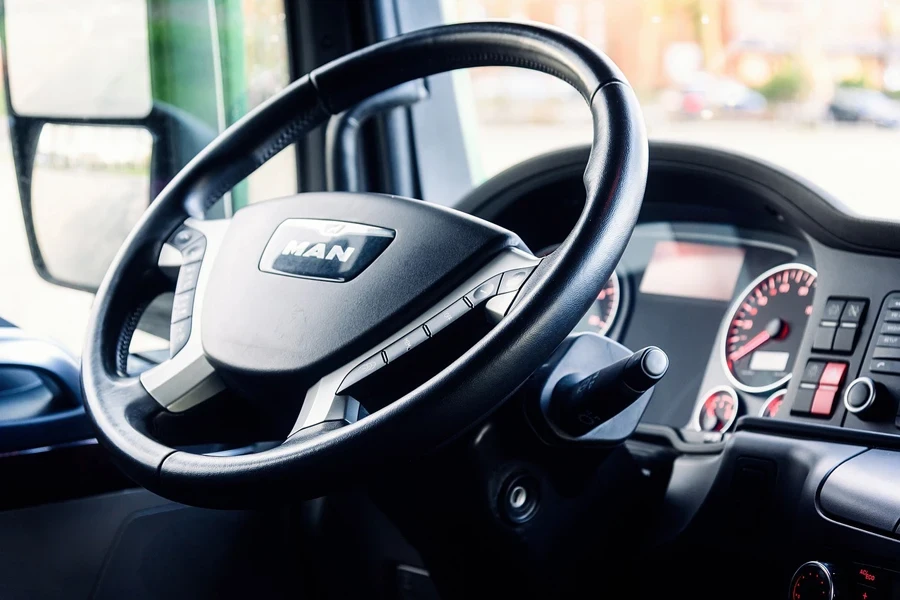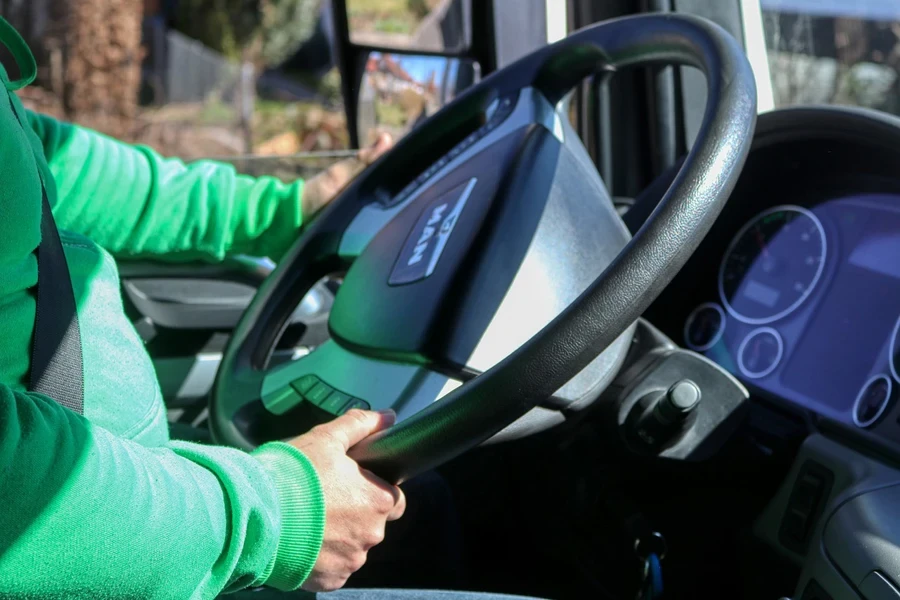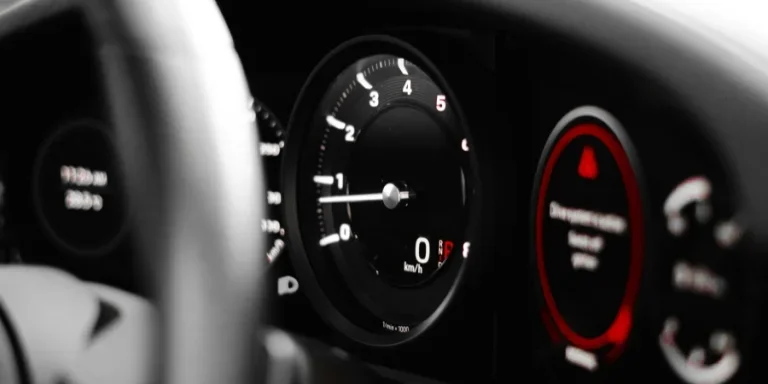Table of Contents
● Introduction
● Market overview
● Different types of truck steering systems and their features
● Things to consider when selecting truck steering systems
● Conclusion
Introduction
Truck steering systems are vital for maintaining safety, driver comfort, and operational efficiency in commercial vehicles. Choosing the right system has become increasingly important as the market evolves with innovations like electronic power steering (EPS) and steer-by-wire technology. Businesses and fleet operators must navigate a landscape where steering technologies are closely linked to fuel efficiency, driver safety, and regulatory compliance. With various options, from traditional hydraulic systems to advanced electronic solutions, making an informed decision can significantly impact vehicle performance. Staying current on these advancements helps companies optimize their fleets and operational costs.

Market overview
In 2024, the worldwide market for truck steering systems is predicted to experience expansion. Vision Research reports that the light-duty truck steering system market is currently worth USD 1.47 billion and anticipates a growth rate of 2.23%, leading to a projected value of USD 1.81 billion by 2033. The increased interest in electric power steering and advancements in steer-by-wire technology propel this upward trend. EPS is increasingly popular in today’s cars because it improves fuel efficiency and enhances control while reducing weight and maintenance expenses.
In 2024, the Asia Pacific region is at the forefront with a 43% market share due to industrial growth and urban development, especially seen in countries such as China and India, pushing forward the e-commerce industry expansion too; meanwhile, North America is projected to grow steadily at a rate of 1.8%. Grand View Research suggests that North America is experiencing a rise in the adoption of cutting-edge steering technologies such as EPS and steer-by-wire, which is in line with the growing emphasis on vehicle electrification and autonomous driving systems. This trend reflects a movement towards friendly and high-tech steering systems in light-duty trucks.

Different types of truck steering systems and their features
Truck steering systems are key in enabling maneuverability and ensuring driver safety across different driving situations. Technological advancements have created distinct steering system types tailored to specific vehicle requirements. Here, we delve into the current prevalent steering system varieties in trucks.
Hydraulic power steering (HPS)
Hydraulic power steering systems are still prevalent in heavy-duty trucks because of their established dependability and capacity to manage high torque levels efficiently. In HPS setups for vehicles like trucks and buses, a hydraulic pump is employed to transmit pressurized fluid to aid in steering, resulting in more effortless wheel turns than steering. This technology ensures a responsive steering experience for maneuverability when carrying sizable loads on heavy trucks. Vision Research reports that High-Pressure Sodium (HPS) held a large position in the market in 2023, with a share of 57% attributed to its reliability and exceptional performance in tough conditions. With the emergence of new technologies in the market landscape, HPS remains a popular choice due to its dependable features in industrial and commercial settings.
Electric power steering (EPS)
Electric power steering (EPS) is becoming more popular in light-duty trucks and commercial vehicles due to its energy efficiency and seamless integration with advanced driver assistance systems (ADAS). Unlike hydraulic power steering (HPS), EPS relies on a motor for steering assistance, eliminating the requirement for hydraulic pumps and reducing the vehicle’s overall weight. This leads to enhanced fuel efficiency and decreased maintenance expenses. Additionally, EPS enables functionalities such as lane-keeping assistance and automated parking, which make it well-suited for integration with driving technologies. Grand View Research predicts that EPS will experience growth as the automotive sector increasingly focuses on electrification and sustainability initiatives.

Electro-hydraulic power steering (EHPS)
Electro-hydraulic power steering (EHPS) combines the advantages of hydraulic and electric power steering in one system design. EHPS uses an electric motor to power the pump, which maintains the durability of hydraulic setups while easing the strain on the engine. This results in fuel efficiency without compromising the power needed for demanding duties. EHPS setups are especially advantageous for medium-duty trucks as they deliver torque for heavy loads while efficiently managing energy consumption. EHPS is a connection point that combines HPS and contemporary EPS setup elements in steering systems.
Steer-by-wire technology
Steer-by-wire technology is seen as the top step for truck steering systems in the realm of autonomous driving innovation. This cutting-edge system does away with connections and opts for electronic controls, resulting in more precise steering responses and unlocking new safety features to keep everyone safe and sound behind the wheel. Steer-by-wire reduces the weight and complexity of steering systems, and its flexibility in design supports the development of more streamlined and efficient trucks. As manufacturers continue to explore autonomous vehicle technology, steer-by-wire systems are expected to play a crucial role in improving vehicle dynamics and control. According to Technavio, the rise of autonomous driving and vehicle electrification will likely propel the adoption of steer-by-wire systems in the coming years.
Things to consider when selecting truck steering systems
Picking the right steering system for a truck enhances vehicle performance and ensures driver safety while keeping operational costs in check. Various aspects need assessment to choose the suitable system, depending on the type of vehicle used, its intended purpose, and technological requirements. Listed below are factors to consider when making an informed choice.

Compatibility with vehicle type
When choosing a steering system for a vehicle, it’s crucial to consider how well it suits the type of vehicle you have in mind. Different cars need varying steering systems; therefore, matching the right system with your truck’s load capacity and intended use is important. Light-duty trucks typically perform better with EPS, which is known for its energy-saving features. On the other hand, heavy-duty trucks usually rely on HPS as they can handle the higher torque demands they face. Sized trucks could achieve an equilibrium by utilizing EHPS, which combines efficiency and strength. Choosing the right system tailored to the vehicle’s needs guarantees top-notch performance and durability over time.
Driver comfort and safety features
Ensuring driver comfort and safety is paramount for long-distance and commercial truck drivers who must navigate the roads for periods. Contemporary steering mechanisms like EPS incorporate advanced driver assistance technologies (ADAS), offering functionalities such as aiding in lane maintenance and automated parking while decreasing the effort required for steering. These steering systems with integrated safety functions elevate the driving experience and assist companies in adhering to safety guidelines. Technavio reports that incorporating ADAS into truck steering systems is increasingly important for buyers as many fleets focus on enhancing driver safety.

Maintenance and fuel efficiency
When deciding on a vehicle to buy or lease for the long term and to save on costs, one should consider the initial price and the costs associated with maintenance and fuel efficiency over time. Traditional hydraulic power steering (HPS) requires more frequent maintenance, leading to higher operational expenses than electric power steering (EPS). The EPS system eliminates the need for parts such as pumps and fluids, resulting in reduced maintenance needs and improved fuel efficiency. Grand View Research states that the growing preference for EPS in duty and medium-duty trucks is mainly because it offers cost-saving benefits in fuel and maintenance costs, making it a popular choice among fleet operators looking to cut expenses.
Technological integration
As trucks rely on technology advancements nowadays, selecting steering systems that work well with tech platforms is crucial. Steering systems that connect smoothly with ADAS, autonomous driving features, and other smart technologies are vital for keeping vehicles current. For instance, the use of steer-by-wire technology enables integration with autonomous driving systems by replacing traditional mechanical linkages with electronic controls. A report from Vision Research highlights the increasing importance of compatibility as more fleet operators turn to electric trucks to address upcoming regulatory and operational requirements.
Conclusion

Choosing the right truck steering system involves comprehending the options and their advantages based on vehicle category and operational needs. Opting for hydraulic power steering is ideal for heavy-duty tasks; however, lighter vehicles may benefit from electro-hydraulic systems, which provide enhanced efficiency and reduced maintenance requirements. With innovations like steer-by-wire gaining traction, selecting a system that incorporates safety measures and autonomous driving capabilities is essential to ensure the longevity of your fleet in an evolving landscape. Businesses can enhance their decision-making process by considering the balance between technological advancements in vehicles and their long-term value regarding fuel efficiency and operational expenses.




